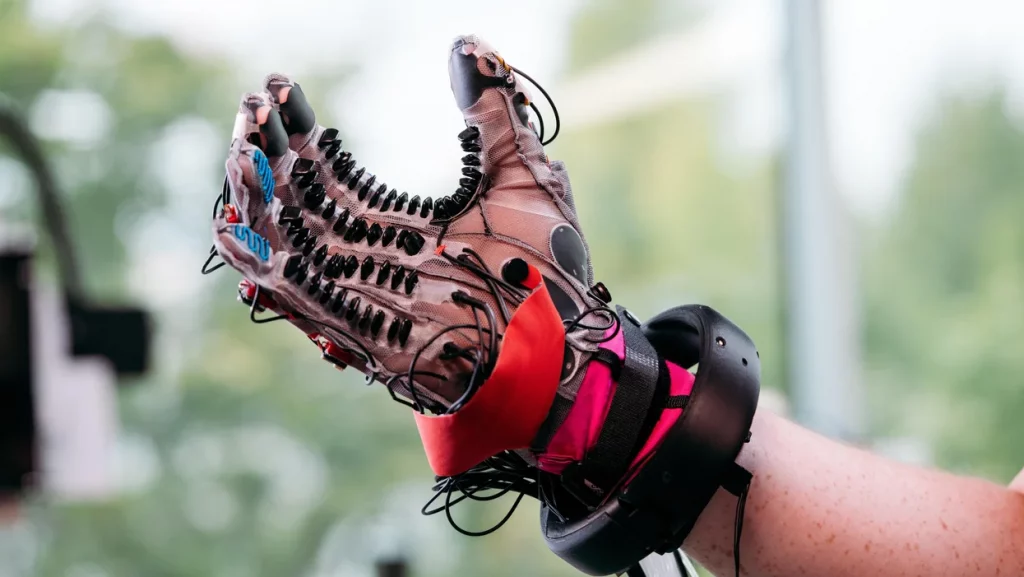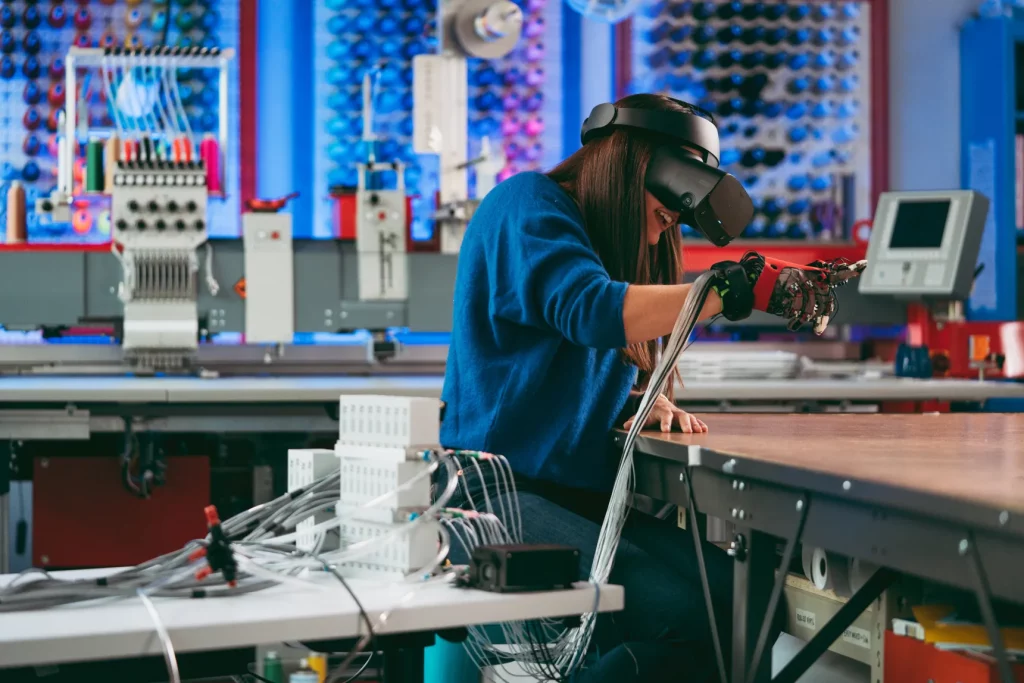
Meta (formerly Facebook) has recently unveiled a prototype of haptic gloves that use a new approach to simulating complex, nuanced sensations to provide their wearer with accurate feedback when interacting with virtual objects.
Instead of relying on small vibration motors—an approach several other companies working on similar products are taking—Meta’s haptic gloves feature an array of small microfluidic actuators, which use air to create force feedback. The same technology can be found in some state-of-the-art medical devices, and its key advantages include low weight, sub-second latency, and low power consumption.
Meta, whose main goal is to usher in the era of metaverse (an embodied version of the internet that can also be described as a connected world of virtual worlds), has been working on the haptic gloves for several years. According to Michael Abrash, chief scientist at Meta Reality Labs, and Sean Keller, director of research science at the Labs, the project is still nowhere near being ready for a public release.

“What we’re trying to do is figure out how to give you rich feedback so that your hands become fully useful. This is a key piece and one of the hardest, long-term riskiest pieces, but once this is in place, then VR can really become an environment in which almost anything is possible that you are effectively capable of doing,” says Abrash.
The researchers working on the haptic gloves estimate that getting there could take 10 to 15 years. While that may seem like a lot of time, it’s important to realize that the first commercial internet service provider offering public access to the rapidly emerging and increasingly global network became operational in 1989. It then took more than 10 years for the number of internet users to reach 360 million. Today, the internet is used by almost 5 billion people.
